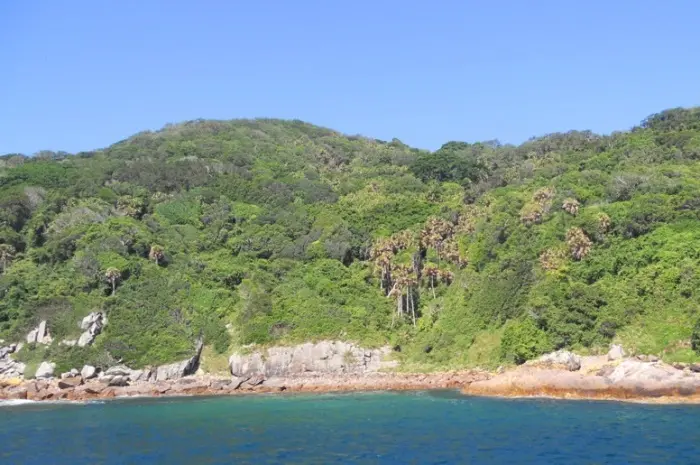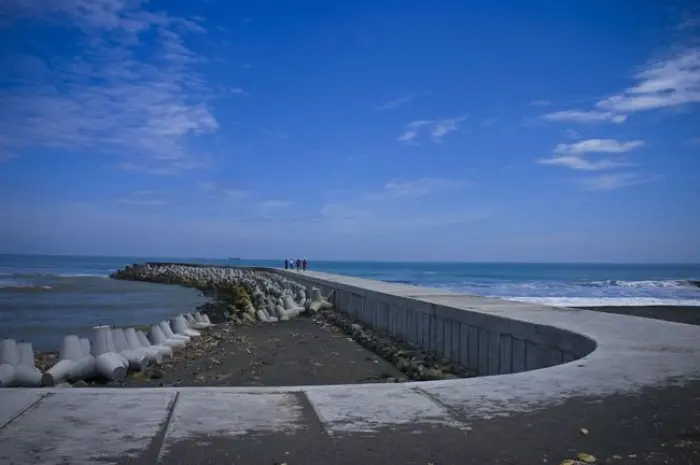Discover interesting facts about Snake Island in Brazil, an island full of mystery and uniqueness, including its extraordinary biodiversity and fascinating history.
Snake Island, or in Portuguese known as Ilha da Queimada Grande, is one of the most mysterious and dangerous islands in the world.
Located off the coast of Brazil, approximately 35 kilometers from the city of São Paulo, the island is famous for being home to one of the most dangerous snake species in the world, the Bothrops asper or better known as the Golden Lancehead Pit Viper.
However, despite its bad reputation, Snake Island also has extraordinary natural beauty and various interesting facts that make it worth knowing.
If you’re interested in its fascinating history, unique wildlife, and the myths that surround it, here are 10 interesting facts about Snake Island that you may not have known.
1. Home to the Golden Lancehead
Snake Island is famous as the home of one of the most dangerous snake species in the world, namely Bothrops asper or Golden Lancehead Pit Viper. This snake has a very strong venom, which can cause organ failure in humans in a short time.
Known for its golden body color and sharp fangs, this snake is one of the most fearsome predators on the island. With a very high snake population, around 1 to 5 snakes per square meter, this island is not suitable for tourists who want to relax on the beach.
2. Prohibited for General Visitors
The Brazilian government severely restricts access to Snake Island. Only a few people can visit this island, and they must obtain special permission from the government or from the relevant authorities.
General tourists are not allowed to visit the island due to the danger posed by the very large snake population. Island rangers and scientists conducting research on the island’s fauna and flora also require special permits and protection to remain safe.
3. Myths About the Island Inhabited by Snakes
Brazilian and international society often associate Snake Island with various myths and legends. One of them is a story about explorers who were lost or died after landing on this island and being attacked by snakes.
This myth has strengthened the aura of mystery that surrounds the island. Some people believe that the island is inhabited by snake spirits, and there are stories that say that the island is a forbidden place for humans.
4. Highly Isolated Ecosystem
Due to very limited access, Snake Island has a very isolated ecosystem. The flora and fauna on this island have developed in very unique conditions.
One of the famous species here is the Golden Lancehead Pit Viper, but there are also various species of birds and insects that live on this island.
The island has no other large predators besides snakes, allowing these species to thrive without much interference from humans or large animals.
5. An island inhabited by more snakes than humans
It is estimated that the number of snakes on Snake Island far outnumbers humans. With a very large snake population, the island is arguably more inhabited by snakes than humans.
The presence of snakes that dominate makes Snake Island one of the most dangerous islands in the world, even far more snakes per square kilometer than anywhere else in the world. Some estimates state that the number of snakes on this island could reach around 4,000 to 5,000.
6. Has Amazing Biodiversity
Despite being known as the home of dangerous snakes, Snake Island also has incredible biodiversity. The island is home to a variety of endemic birds and insects that cannot be found anywhere else.
Some of the birds found on the island include endemic species such as the endangered Sao Paulo Parakeet, which can only be found in certain areas of Brazil.
This island has flora that is also very distinctive, including various types of plants that can survive in a humid tropical climate.
7. Limited Research on Golden Lancehead Snakes
The Golden Lancehead Pit Viper snake that lives on Snake Island has become an object of great scientific interest.
Researchers are interested in the venom produced by this snake, which is extremely potent and could be used for medical purposes, such as in the development of drugs to cure certain diseases, including blood thinners and cancer treatments.
Research conducted on the island is limited, given the high risks, but existing research suggests that these snakes play an important role in the island’s ecosystem.
8. This Island Has No Clean Water Source
One of the reasons why Snake Island cannot be inhabited by humans is the lack of clean water sources. Although the island has lush vegetation, the availability of clean water that can be consumed by humans is very limited.
Only a few places with fresh water sources can be found on the island, but most of the water on the island comes from rainwater, which is not enough to support human life in the long term.
9. Areas Protected by the Brazilian Government
The Brazilian government has designated Snake Island as a protected area, meaning no construction or settlement is allowed there .
Only researchers with official permits can access the island to conduct scientific studies. The protected area status is intended to protect the fragile ecosystem and ensure that the Golden Lancehead and other species can continue to thrive without disturbance.
10. Amazing Natural Beauty Despite Danger
Despite being known for the dangers posed by snakes, Snake Island also has extraordinary natural beauty. The island is filled with lush tropical trees, sandy beaches that are rarely touched by humans, and crystal clear sea views.
The island’s beauty makes it an interesting subject for nature photography, although limited access makes it difficult to explore.
Snake Island in Brazil, with all its uniqueness, is one of the most mysterious and challenging places in the world.
Although known for its very high snake population, the island also offers extraordinary natural beauty and is important in the context of ecosystems and scientific research.
The presence of the Golden Lancehead Pit Viper and other unique flora and fauna make North Sentinel an attractive place for researchers and those interested in wildlife.
However, with the great risks involved, only a few people can access this island, making it one of the most mysterious and forbidden locations in the world.



